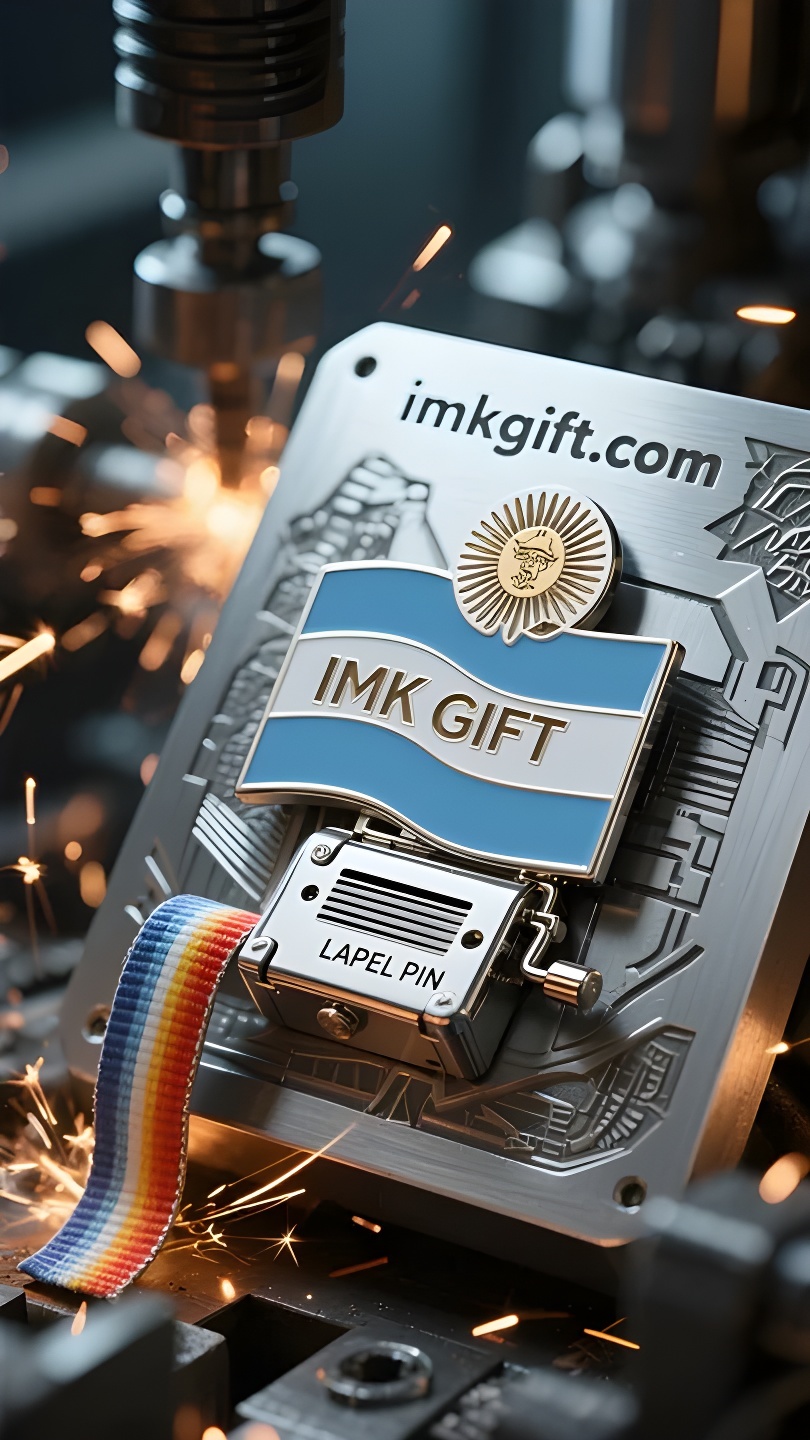in996-El-eco-del-hogar-y-la-patria-en-los-engranajes-del-tiempo
▼
En las calles de Argentina, en mayo, la bandera nacional azul y blanca ondeaba como olas en el viento. Era el aniversario de la Revolución de Mayo y la sangre histórica de este país sudamericano volvía a hervir en la celebración. En el alféizar de la ventana de una familia normal gira silenciosamente una caja de música con incrustaciones del emblema nacional. Los engranajes y las lengüetas chocan para producir la melodía de la “Marcha de la Patria”, convirtiendo el espíritu nacional en ondas sonoras concretas. Esta caja de música de cobre está diseñada con el emblema nacional como cuerpo principal. Las manos unidas sostienen el gorro de la libertad y las ramas de olivo y de laurel se entrelazan formando un anillo que, junto con el sol naciente en la parte superior, forma el tótem nacional. Cuando el resorte principal se pone en marcha y el tambor metálico golpea el peine, parece como si se pudiera escuchar a través del tiempo y el espacio la declaración del general San Martín: “No nacimos para conquistar, sino para luchar para proteger la libertad”. Cada nota lleva el eco de los cascos de los caballos aplastando los grilletes coloniales durante la Guerra de la Independencia. El diseño más conmovedor de una caja de música es su mecanismo de bucle. No importa cómo cambie el mundo exterior, siempre que se gire el resorte, la melodía eterna fluirá de nuevo. Lo mismo ocurre con la nación argentina, que siempre ha mantenido su aspiración original de “unidad y libertad” a pesar de experimentar shocks económicos y cambios sociales. Las manos en el emblema nacional no son solo un vínculo entre diferentes grupos étnicos, sino también una transmisión espiritual entre generaciones: la generación mayor hace girar la primavera y la nueva generación escucha las enseñanzas, para que la luz del sol de mayo brille siempre en la tierra protegida por la Cruz del Sur. En ese momento, con el sonido de la caja de música, las franjas azules y blancas de la bandera nacional se transformaron en el cielo y la Cordillera de los Andes, y la Cornucopia del escudo nacional brotó de las claras aguas del Río de la Plata. Cuando la última nota se desvanecía bajo el sol de mayo, un niño se puso de puntillas y tomó solemnemente el emblema nacional cantado, continuando así escribiendo la música nacional de la nueva generación.
On the streets of Argentina in May, the blue and white national flags fluttered in the wind. It was the anniversary of the May Revolution, and the historical blood of this South American country was boiling again in the celebration. On the windowsill of an ordinary family, a music box inlaid with the national emblem was quietly turning, and the gears and reeds collided to produce the melody of “March of the Motherland”, turning the national spirit into concrete sound waves. This copper music box is designed with the national emblem as the main body. The clasped hands hold up the cap of freedom, and the olive branches and laurel branches are intertwined into a ring, forming a national totem with the rising sun at the top. When the spring starts and the metal drum hits the comb, it seems to hear General San Martin’s declaration across time and space: “We are not born to conquer, but to fight to protect freedom.” Each note carries the echo of the horse’s hooves crushing the colonial shackles during the War of Independence. The most moving design of the music box is its circulation mechanism. No matter how the outside world changes, as long as the spring is rotated, the eternal melody will flow again. This is just like the Argentine nation that has always maintained its original aspiration of “unity and freedom” despite economic shocks and social changes. The hands on the national emblem are not only a clasp of different ethnic groups, but also a spiritual transmission between generations – the older generation turns the clockwork, and the new generation listens to the teachings, so that the light of the May sun will always shine on the land protected by the Southern Cross. At this moment, in the ding-dong sound of the music box, the blue and white stripes of the national flag turn into the sky and the Andes Mountains, and the cornucopia of the national emblem gushes out the clear water of the La Plata River. When the last note dissipates in the May sunshine, a child is standing on tiptoe, solemnly taking over this singing national emblem, and continuing to write the national movement belonging to the new generation.
五月的阿根廷街头,蓝白相间的国旗在风中翻涌如浪。此时正值五月革命纪念日,这座南美国家的历史血脉在庆典中重新沸腾。而在一户普通家庭的窗台上,一枚镶嵌着国徽图案的音乐盒正静静转动,齿轮与簧片碰撞出《祖国进行曲》的旋律,将民族精神化为具象的声波。
这枚铜制音乐盒以国徽为主体设计,紧握的双手托起自由之帽,橄榄枝与月桂枝交错成环,与顶端的旭日共同构成国家图腾。当发条启动,金属滚筒敲击音梳的刹那,仿佛听见圣马丁将军穿越时空的宣言:”我们不是为征服而生,而是为守护自由而战。”每个音符都承载着独立战争时马蹄踏碎殖民枷锁的回响。
音乐盒最动人的设计在于其循环机制。无论外部世界如何变迁,只要旋转发条,永恒的旋律便会再度流淌。这恰如阿根廷民族历经经济震荡与社会变革,始终保持着”团结与自由”的初心。国徽上的双手不仅是不同族群的紧握,更是代际之间的精神传递——老一辈转动发条,新一代聆听教诲,让五月太阳的光芒永远照耀南十字星守护的土地。
此刻音乐盒的叮咚声中,国旗的蓝白条纹化作天空与安第斯山脉,国徽的丰饶之角涌出拉普拉塔河的清流。当最后一个音符消散在五月阳光下,某个孩子正踮起脚尖,郑重地接过这枚会唱歌的国徽,续写属于新世代的民族乐章。
▼
Contact Us
📞 Tel: +0086-760-85286839
📧 Email: sales3@imkgift.com








